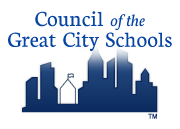-
Lesson 12: Evaluate and Refine Strategies -- Repeat
It is relatively easy to measure communications “inputs” such as microsites launched, e-newsletters sent, presentations given, toolkits created, media interviews conducted, and so on. But beyond the obvious “outcomes” (website hits, open rates on emails, number of positive media mentions, and the like), it is more difficult to measure the actual effectiveness of communications programs. That is, did the recipients actually hear what you had to say? Did they understand it? And are they more likely to engage with you and support the work as a result? Is more or different communication needed?
At least three of the participating districts (Atlanta, Hillsborough County [FL], and Pittsburgh) are trying to answer questions such as these with more detailed surveys. Green Dot (CA) also uses audience response clickers, surveys after all presentations, and wiki forums to assess the effectiveness of its communications.
Examples from the Field:
Atlanta Public Schools

The district uses several tools to determine both levels of support for the new system and the impact of communications. The district administers and analyzes surveys after each meeting to make sure people actually understood and heard key messages, not just to find out whether they liked the meeting. It conducts quarterly focus groups with teachers randomly selected from each school. It conducts an annual survey of all teachers and administrative staff. The principal survey asks questions such as: Have you read the emails? Have you had a sufficient opportunity to provide input? And do you have enough information to answer questions from parents and teachers or make a presentation?
Hillsborough County Public Schools (FL)
The district uses touch-pad technology (“clickers”) to get instant feedback on key issues during weekly principals meetings. It also uses tools such as these to survey teachers regularly."The clickers are fun, anonymous, and timely and provide instant results."— Stephen Hegarty (Hillsborough County Public Schools)Denver Public SchoolsDenver uses a four-question survey four times a year to seek educator input on its communications efforts."We ask: Do they understand our system? Did they have a voice in developing it? Is it fair?"
— Jennifer Stern (Denver Public Schools)Pittsburgh Public Schools
Each year the district works with the New Teacher Center to conduct a comprehensive and anonymous survey of teacher working conditions. The survey covers multiple topics, from school leadership and instructional support to facilities and professional development. The Community Support and Involvement section includes items that assess the impact of communications, such as “our school maintains clear, two-way communications with the community” and “the majority of teachers provide parents/guardians with useful information about student learning.”
More than 90 percent of teachers participate, partly because of an active promotion campaign that includes a poster, flyer, counter cards, and the active involvement of Teaching and Learning Environment liaisons (see Lesson 6).
The website includes background and results from the past three years. A press release summarizes results, and the district has taken several steps to act on what it’s heard, including publishing a collection of staff best practices; piloting a behavior expectations project to model common, positive expectations for all students and staff; and creating a comprehensive student support services guide.



